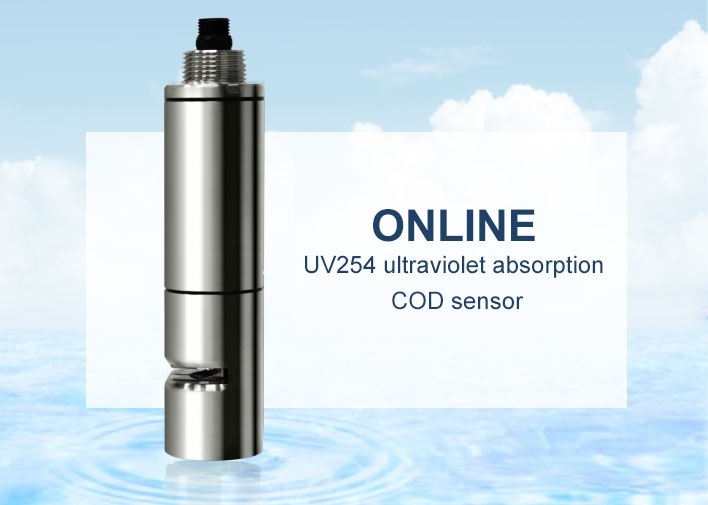Online COD sensors, also known as inline COD probes, are instruments designed for continuous monitoring of chemical oxygen demand (COD) in water or wastewater. Utilizing state-of-the-art UV254 ultraviolet absorption technology, they provide rapid, accurate, and reliable measurements of organic content, supporting online digital transmission for seamless integration into water quality monitoring systems. Chemical Oxygen Demand (COD) is a crucial indicator for assessing organic pollution levels in water. It represents the amount of oxidant consumed during the oxidation of organic and certain inorganic materials. Elevated COD levels indicate excessive organic pollutants, which can deplete dissolved oxygen, harming aquatic ecosystems and reducing water usability. Monitoring COD ensures adherence to environmental regulations and aids in effective water treatment strategies. Online COD sensors employ the UV254 ultraviolet absorption method to analyze water samples. When irradiated, organic matter absorbs ultraviolet light, and the intensity of absorption correlates directly with the organic content, enabling precise COD value calculations. This non-chemical method is highly efficient and suitable for a broad range of water samples, from potable water to heavily polluted wastewater.  Our online COD sensors can also be configured as online TOC COD sensors or online TOC COD TU sensors, providing a comprehensive analysis of Water Quality Parameters. This versatility makes them ideal for a wide range of applications where precise monitoring of organic content, total organic carbon, and turbidity is crucial.  Online COD sensors and probes from Daruifuno are indispensable for precise and efficient water quality monitoring. With their ability to accurately measure COD, TOC, and TU, they play a vital role in environmental protection and industrial applications. By adopting these advanced tools, industries and researchers can better manage water resources, reduce pollution, and ensure compliance with regulations. If you want to know more about COD Sensor, please visit our COD Sensor category page to get product information and technical support。 online COD sensor,online COD probe,online TOC COD sensor, online TOC COD TU sensor Suzhou Delfino Environmental Technology Co., Ltd. , https://www.daruifuno.comOverview

What is COD?
How Online COD Sensors Work
Key Features of Online COD Sensors
Applications
Advanced Multi-Parameter Sensors
Conclusion
[Technology] Properties, Melting and Heat Treatment Processes of Cast Titanium Alloys
Titanium and its alloys have only been industrially produced for over 50 years, yet they have quickly become essential materials in various high-tech fields. Known for their low density, high specific strength, excellent corrosion resistance, small coefficient of thermal expansion, and outstanding biocompatibility, titanium is abundant in the Earth's crust. These unique properties make it highly suitable for a wide range of applications, including aerospace, energy, marine transportation, chemical processing, and medical industries. Over time, titanium has proven its value and become an irreplaceable material in many critical sectors.
However, despite its promising characteristics, titanium exhibits high chemical reactivity when melted, which makes it prone to reacting with common refractory materials used in the melting process. This reactivity leads to challenges in both melting and casting, resulting in complex processing conditions and higher production costs. As a result, the development and widespread use of titanium and its alloys have lagged behind more traditional materials such as steel, iron, aluminum, and copper.
Moreover, the limited availability of specialized equipment and the need for strict environmental controls during production further contribute to the high cost and complexity of working with titanium. These factors have historically restricted its application to niche markets where its superior properties justify the additional expenses. Nevertheless, ongoing advancements in technology and manufacturing processes are gradually improving the accessibility and affordability of titanium, opening up new opportunities for its broader use in the future.
Â
Â